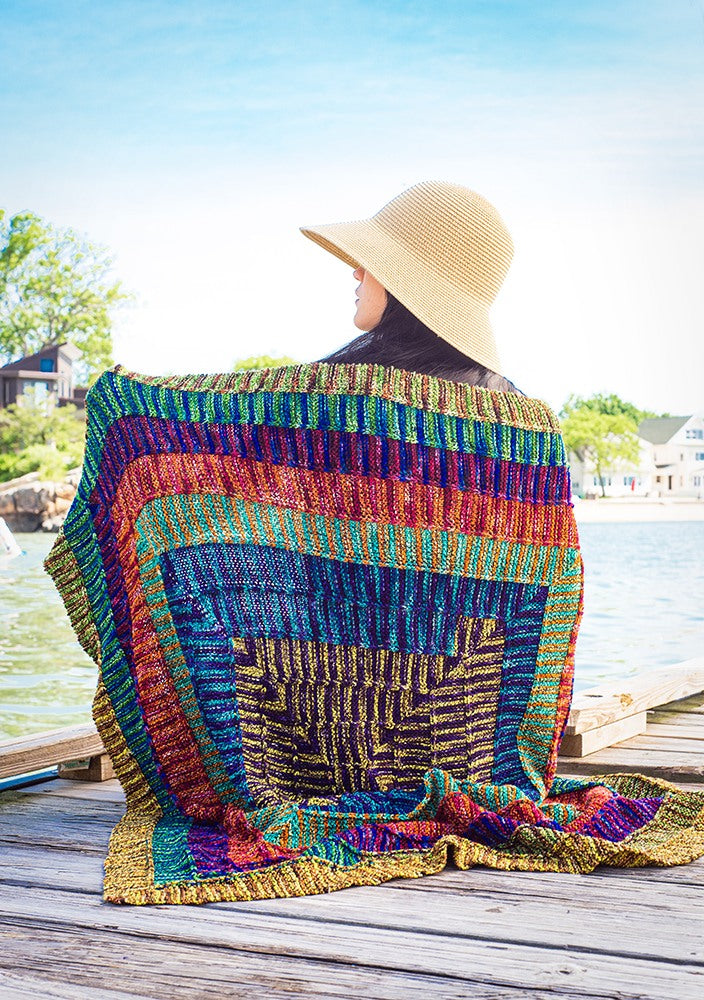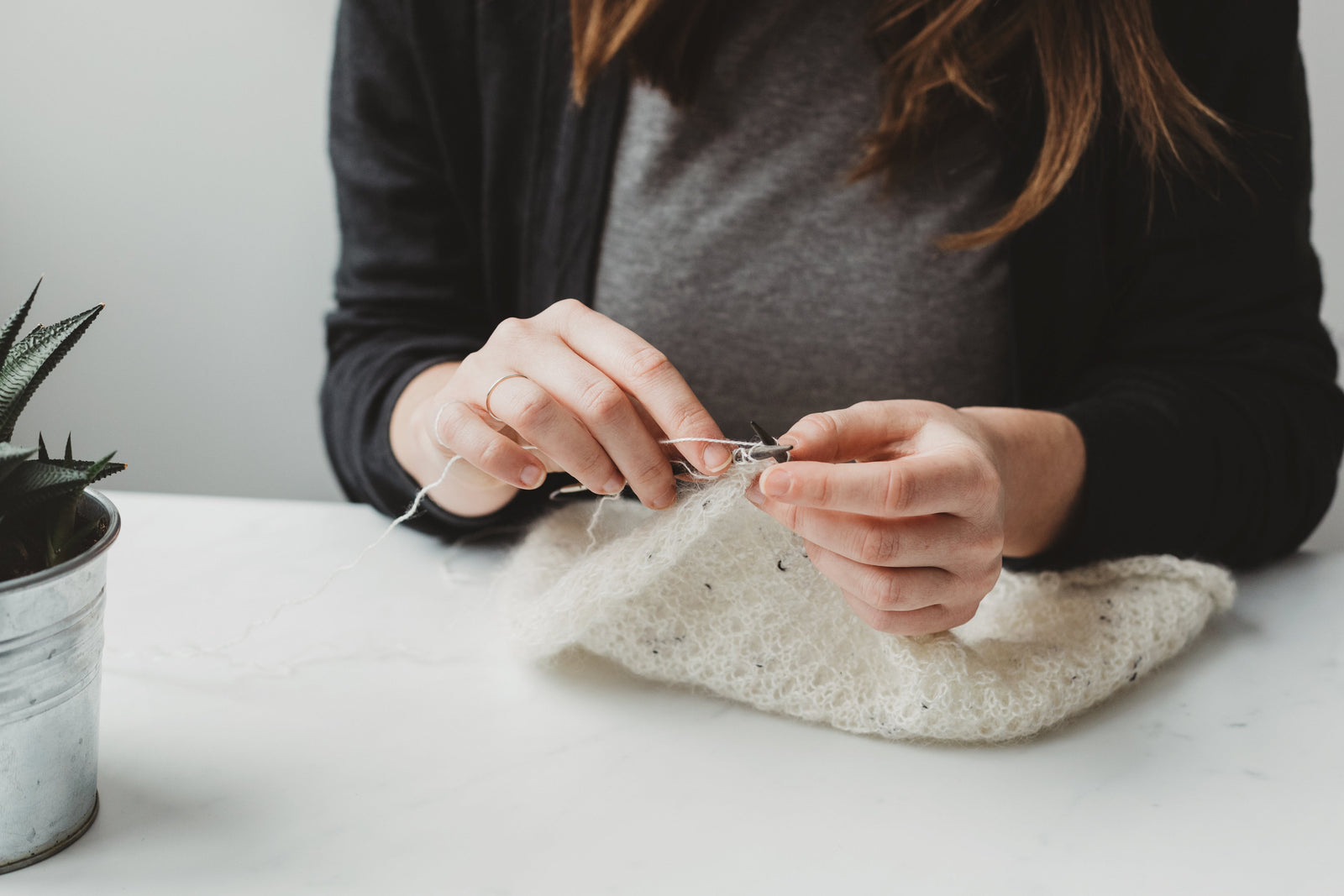Your Cart is Empty
50% OFF SITEWIDE - just add to cart to see savings in checkout - ALL SALES FINAL
"Knitting has a rich and fascinating history that spans centuries and continents. It's amazing to think that such a simple craft has had such a profound impact on so many people's lives." - Unknown
Knitting is a craft that has been passed down from generation to generation for centuries, bringing warmth, comfort, and creativity to people all over the world. It's amazing to think that this simple craft that involves nothing more than a pair of needles and some yarn has such a rich and fascinating history. So let's take a trip back in time and explore the origin of knitting.
The exact origins of knitting are a bit of a mystery, but it's believed to have originated in the Middle East, likely Egypt or Arabia, around the 11th century. Back then, knitting was a practical craft that was used to create items such as socks, hats, and mittens. The technique of knitting allowed for the creation of stretchy, warm fabrics that were perfect for cold climates.
As knitting spread throughout Europe, it became more than just a practical craft. During the Renaissance, knitting became a popular pastime for wealthy women, who would gather together to knit and socialize. Knitting became a form of self-expression, and women would often incorporate intricate patterns and designs into their work.
In the 19th century, knitting became even more important during times of war. Women would knit socks and other items for soldiers fighting in battle, providing them with warmth and comfort in difficult circumstances. Knitting also became a symbol of patriotism and support for the troops.
Over time, knitting has evolved into an art form, with designers creating stunning and intricate knitwear for the runway. However, the basic techniques of knitting remain the same, and it's still a craft that's enjoyed by people of all ages and backgrounds.
One of the earliest forms of knitting was known as "nålebinding," which was practiced by the Vikings. Nålebinding involves using a single needle to create fabric, rather than two needles. It's a slower and more labor-intensive technique than knitting, but it creates a very sturdy and durable fabric.
In the Middle Ages, knitting began to spread throughout Europe. It's believed that knitting was introduced to England by Queen Elizabeth I, who was an avid knitter herself. By the 16th century, knitting had become a popular pastime for women throughout Europe.
During the 17th and 18th centuries, knitting became an important cottage industry in Scotland. Women would spin their own wool and knit it into socks, sweaters, and other garments that were then sold at local markets. Knitting became a way for women to earn a living and support their families.
In the 19th century, knitting became even more important during times of war. During the Crimean War, women would knit socks and other items for soldiers fighting in battle. Knitting also became a symbol of patriotism and support for the troops. In fact, it's believed that the phrase "keep the home fires burning" originated from a World War I-era song that encouraged women to stay at home and knit socks for soldiers.
Throughout the 20th century, knitting remained a popular pastime, with women gathering together to knit and socialize. However, by the 1980s, knitting had fallen out of fashion. It was seen as something that only grandmothers did, and young people weren't interested in learning the craft.
But in the early 2000s, knitting experienced a resurgence. The rise of online communities and social media made it easier for people to connect with others who shared their love of knitting. Knitting also became a way for people to express their creativity and individuality, with designers creating patterns that were trendy and fashionable.
Today, knitting is more popular than ever. It's a hobby that people of all ages enjoy, from grandmothers to college students. Knitting has also been embraced by the fashion world, with designers creating stunning and intricate knitwear for the runway.
Knitting has also been shown to have a number of health benefits. Knitting has been shown to reduce stress, improve cognitive function, and even reduce the risk of developing dementia. In addition, knitting can be a great way to meet new people and build a sense of community.
So why not give knitting a try? It's a craft that has a rich and fascinating history, and it's a great way to express your creativity and make something beautiful and useful at the same time. With so many resources available, it's easier than ever to learn how to knit, whether you're a beginner or an experienced knitter.
There are a few basic tools you'll need to get started with knitting. First, you'll need a pair of knitting needles. Knitting needles come in a variety of sizes and materials, from bamboo to metal. You'll also need some yarn, which comes in a variety of colors and textures. Finally, you'll need a pattern to follow. There are many free patterns available online, as well as books and magazines devoted to knitting.
Once you have your tools, it's time to start knitting! There are two basic stitches in knitting: the knit stitch and the purl stitch. These stitches can be combined in a variety of ways to create different patterns and textures. There are also many advanced techniques you can learn, such as cable knitting and lace knitting.
In addition to creating beautiful garments and accessories, knitting can also be a way to give back to your community. Many knitting groups and charities collect knitted items such as hats, scarves, and blankets to donate to those in need. Knitting for charity can be a great way to use your skills to make a positive impact in the world.
In conclusion, the origin of knitting is a fascinating and storied history that has spanned centuries and continents. From its humble beginnings as a practical craft to its current status as a beloved hobby and art form, knitting has captured the hearts and imaginations of people around the world. So why not give knitting a try? Whether you're a beginner or an experienced knitter, knitting is a craft that's both relaxing and rewarding, and it's a great way to connect with others and express your creativity.




